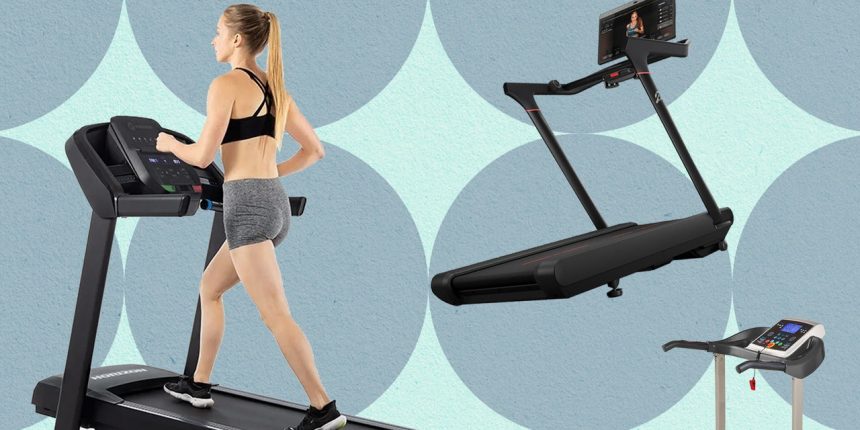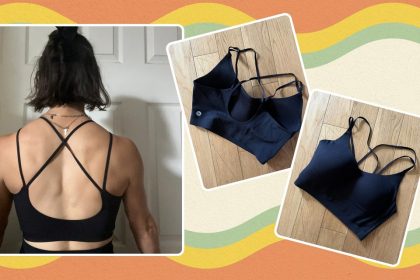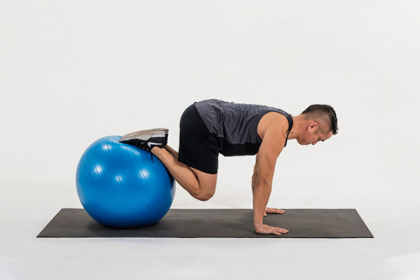Price doesn’t always directly translate to quality, but more expensive treadmills often have more features, such as more incline and decline options, built-in fitness programming, and more powerful motors. If you’re on the fence about how much to spend, think about how often you plan to use the treadmill: If it’s going to be part of your everyday routine, you may want to invest more in a higher-quality model up front in the name of longevity. If you think you’ll use it less frequently, you probably don’t need to splurge on a pricey workhorse treadmill.
Size
A critical step before adding a new treadmill to your cart is making sure that it will actually fit in your space. So grab that measuring tape and get to work. Make sure the tread of your choice not only fits in the spot where you want it, but also that it’ll fit when folded. (Some vertical-folding options actually increase the height of a tread when they’re stowed.) You’ll also want to ensure there’s enough clearance both behind the machine (to prevent injury in case you fall) and above it (so you don’t hit your head getting on or off).
The size of the running belt itself also matters. “A belt length of 50 to 55 inches is ideal for walking. The width should be at least 20 inches to ensure you have enough space to walk comfortably,” says Graca. If you’re taller, you may want a 60-inch belt.
Storability
Ask yourself: Are you going to leave your treadmill out, or slide it under your couch or against a wall when you’ve logged your miles? If the latter, you’ll likely want a treadmill that folds up or down for easier storage. You may also want to consider the weight of the treadmill and whether it has features like wheels to make moving it around easier.
Warranty and trial period
“Look for machines that offer a solid warranty on the motor, frame, and parts. Usually, you’ll want at least a lifetime warranty on the frame and five years on the motor,” says Graca. If your chosen treadmill offers a trial period, make sure to really put the machine through its paces during that time. “When trying out a treadmill, you can usually feel whether the shock absorption is comfortable or not,” says Graves. “Check out the display monitor: Can you read it easily? Then check out the controls: Can you reach all of them, and do they do everything you want them to do?”
What are the best treadmill workouts?
In addition to the preset exercise routines built into many of these treadmills, Graves recommends a few types of workouts to make the most of your time on the belt:
Low-intensity steady-state cardio (LISS)
“LISS is lower-intensity cardio at a consistent pace for an extended period of time—for example, a brisk walk on a flat road.” says Graves. “LISS benefits include improved endurance, recovery, mood, and cognitive function.” She recommends targeting a heart rate that stays in zone 1 or zone 2 (which should feel like a three out of 10 when it comes to effort) to get the most benefits.
High-intensity interval training (HIIT)
HIIT is pretty much the opposite of LISS. “HIIT is a great method for raising your anaerobic threshold, or the highest exercise intensity that you can sustain for a long period of time,” says Graves. Over time, this may improve your VO2 max (how much oxygen you can use during exercise) and endurance. You might associate HIIT with floor workouts or Crossfit gyms, but you can incorporate HIIT into a walking workout on your treadmill too. For example, after a warm-up, try upping the incline to 7.0 or 8.0 for 30 to 60 seconds to raise your heart rate and challenge your glute and leg muscles before returning to flat and resuming your walk.
Backwards walking
“Backwards walking engages different muscles than forward walking, challenging the abs and the back,” says Graves. “It also lowers the impact of each footstep, meaning the knees and lower back are protected.” She recommends trying this workout at a slower walking speed, like 2.0, until you get the hang of it.
How we tested these treadmills
Our testers considered a number of factors, including durability, cushioning, ease of use, programming, warranties, value, and more to determine which walking treadmills are truly worth the square footage they’ll take up in your home. To read more about our fitness-testing methodology, head here, but here’s a highlights reel:
Price
For each treadmill, testers considered whether they’d be willing to pay the listed price for an item based on their experience using it, and how its features stack up to others at different price points.
Speed and incline
To ensure walkers of all speeds and fitness levels can get a good workout, testers consider a treadmill’s speed capabilities as well as its incline (and, if available, decline) options. Responsiveness when adjusting speed and incline is important to us, too. How fast can your treadmill adjust from 1.5 speed at 1.0 incline to 3.5 speed at 8.0 incline? Laggy response time can mess up your workout flow and create a frustrating experience.
Footprint
Testers always consider how much space a treadmill requires. Does it fold upward? Move around easily? Does it look like an eyesore or a snazzy piece of workout equipment? All of this data factors into an overall score.
FAQs
We asked experts for some of the biggest questions you may have about adding a walking treadmill to your workout routine.
How do I choose a treadmill for walking?
You should choose a treadmill for walking that has the price point, programming, belt length, and speed and incline controls that make sense for you, personal trainer and physical therapist Milica McDowell, DPT, tells SELF. Graca recommends finding a treadmill with a belt length of at least 50 inches and a range of incline and decline options that will allow you to do many different workouts.
Is walking on the treadmill 30 minutes a day good?
Walking, period, is good. “In short, some is better than none,” says Graves. “If you can’t do an hour on the treadmill but you can do 10 minutes, do those 10 minutes. Consistency will make a difference over time. Just do what you can. As a general rule, 30 minutes a day will provide benefits in cardiovascular fitness, endurance…and strength.”
Are treadmills good for walking?
Absolutely! Every treadmill features speeds slow enough for walking. “Most people walk below 4 miles per hour, jog at 4 to 5 miles per hour, and begin a running pattern along 6 miles per hour,” says Dr. McDowell. “It can be tempting to buy a treadmill that goes 10 or 12 miles per hour, but most of us won’t ever use those speeds, so you are paying for functionality you don’t need.” You can also increase the incline to simulate the hills and even mountains you would find while walking outdoors.
What length of treadmill do I need for walking?
Graca says that a belt length of 50 to 55 inches and a width of at least 20 inches will give you all the runway you need for many great walks. That said, you could look for an even longer belt if you’re on the tall side.
What makes a good walking treadmill?
A good walking treadmill allows you to quickly switch between speeds and inclines, provides ample cushioning to support your joints, and fits in your space. “A clear display that tracks basic metrics like time, speed, distance, calories, and heart rate can be helpful,” says Graca. “Some treadmills come with additional features like Bluetooth connectivity, pre-set walking programs, monitors or screens with guided walks, and integration with fitness apps.”
Related:







